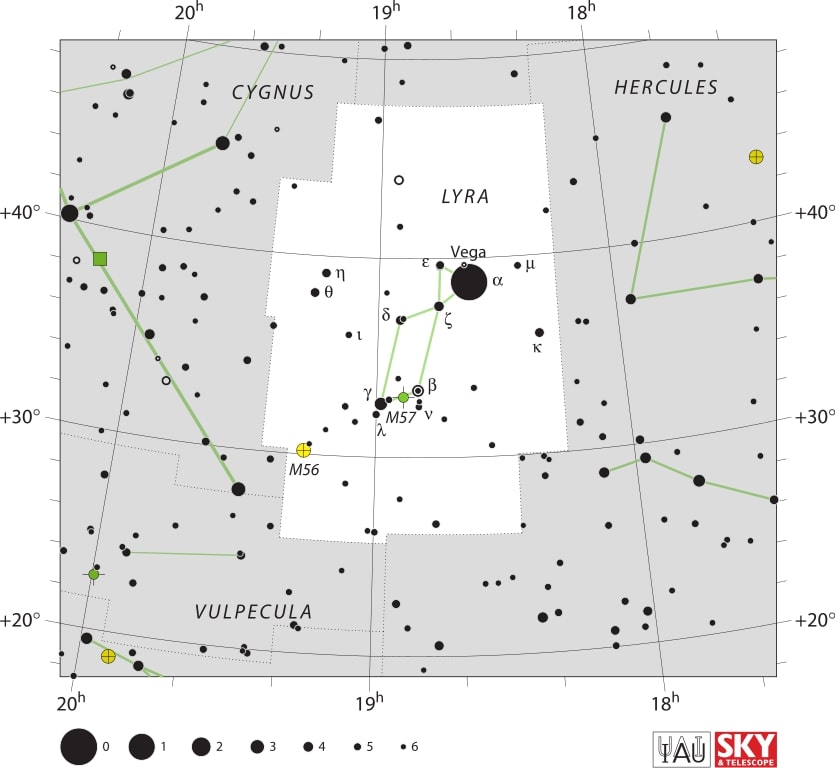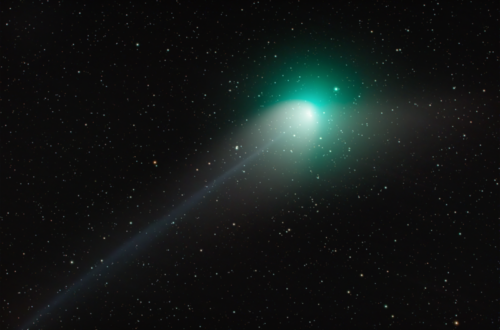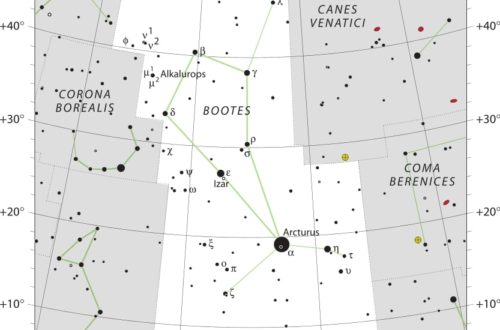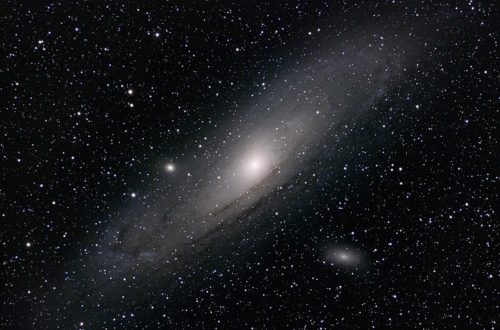Monthly Stargazing Calendar for April 2013
Looking for the April 2025 stargazing calendar?
This month will be quite eventful and will have many interesting astronomical events. First of all, on April 14 we will witness the conjunction of the Moon and Jupiter. The Moon will appear to pass about two degrees of the giant planet Jupiter in the evening sky. The crescent moon will be at magnitude -10.6 and Jupiter at magnitude -2.1.
Then on the night of April 21 and 22 the Lyrids meteor shower will peak. The Lyrids is an average shower, usually producing about 20 meteors per hour at its peak. It originates from dust particles left behind by comet C/1861 G1 Thatcher, discovered in 1861. These meteors can sometimes produce bright dust trails lasting for several seconds. Unfortunately, the nearly full moon will be a problem this year, blocking out all but the brightest meteors. This is why it important to be viewing from a dark location after midnight. Meteors will appear to radiate from the constellation Lyra, but can appear anywhere in the sky.

Would you like to be notified of stargazing events?
On April 25 the will be a partial lunar eclipse. The Moon will pass through the Earth’s partial shadow, or penumbra, and only a portion of it will pass through the darkest shadow, or umbra. During this type of eclipse a part of the Moon will darken as it moves through the Earth’s shadow. The eclipse will be visible throughout most of Africa, Europe, Asia, and Australia.
 NASA map and eclipse information
NASA map and eclipse information
Finally on April 28 Saturn will be at opposition. The ringed planet will be at its closest approach to Earth and its face will be fully illuminated by the Sun. This is the best time to view and photograph Saturn and its moons. With the help of a medium-sized or larger telescope you will be able to see Saturn’s rings and a few of its brightest moons.
Moon phases
As you know, the Moon has a big impact on the visibility of celestial bodies in the night sky. So here are the Moon’s phases for this month:

Positions of the planets this month
Mercury: The closest planet to the Sun can be seen at dawn and dusk travelling across the constellations of Aquarius and Pisces, between the planets Neptune and Uranus. This planet, being the closest to the Sun, will appear to move quickly in the night sky and its position will change in the following weeks.
Venus: The sister planet can be seen in the constellation of Pisces not far from the planet Mars. Just like Mercury, Venus can only be seen at dawn and dusk.
Mars: The red planet can be seen in the constellation of Pisces.
Jupiter: The gas giant is visible in the constellation of Taurus. Jupiter can easily be spotted with the naked eye, even in highly illuminated cities.
Saturn: The ringed giant can be seen with the naked eye between the constellations of Virgo and Libra.
Uranus: The gas giant can be seen between the constellations of Pisces and Cetus with the use of a telescope.
Neptune: The blue giant requires a telescope pointed in the constellation of Aquarius in order to be seen.
Major astronomical event next months
- May 4, 5 – Eta Aquarids Meteor Shower.
- May 10 – Annular Solar Eclipse.
- May 25 – Penumbral Lunar Eclipse.
- May 28 – Conjunction of Venus and Jupiter.
See also:
- Previous month’s calendar: [Hiatus] Stargazing Calendar for February 2013
- Next month’s calendar: Stargazing Calendar for May 2013
Would you like to receive similar articles by email?





